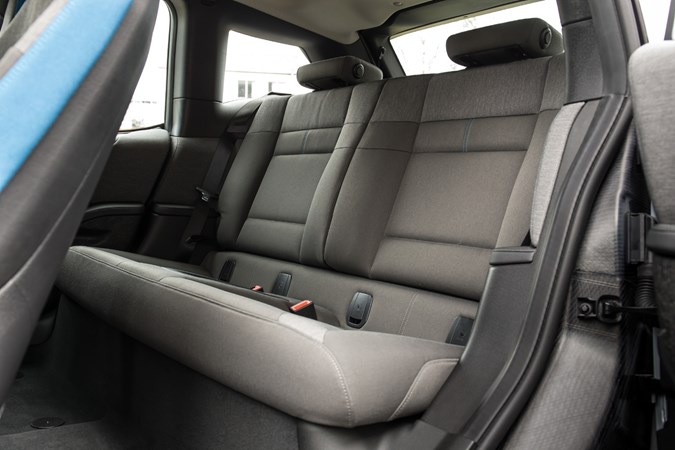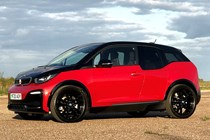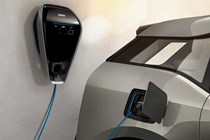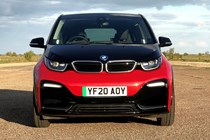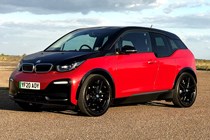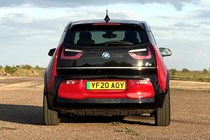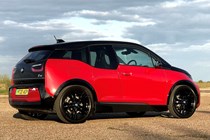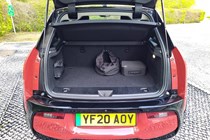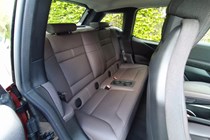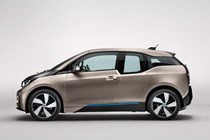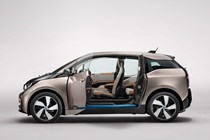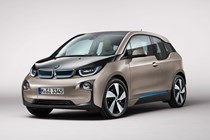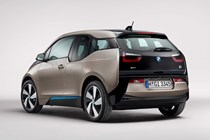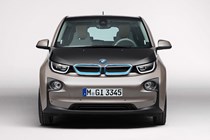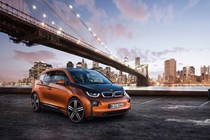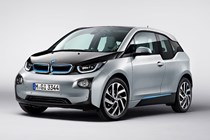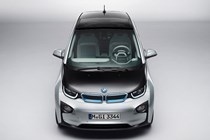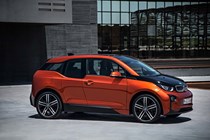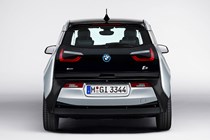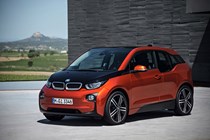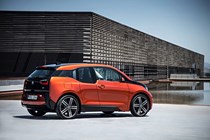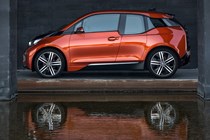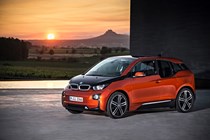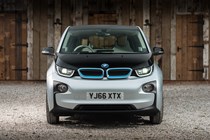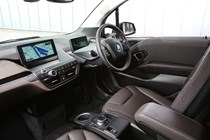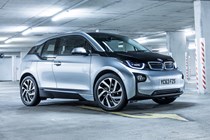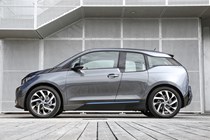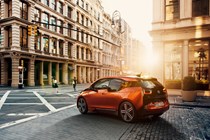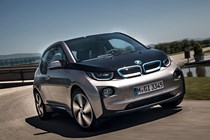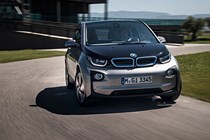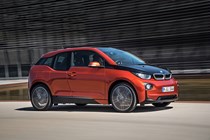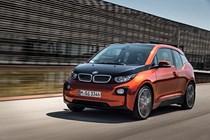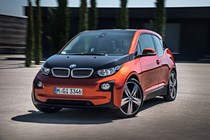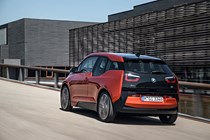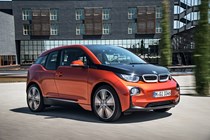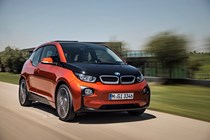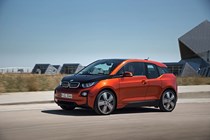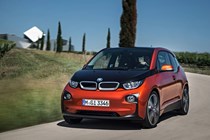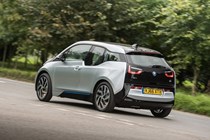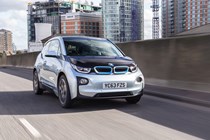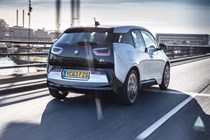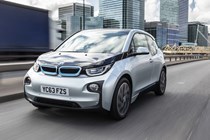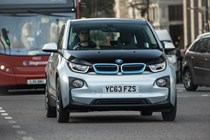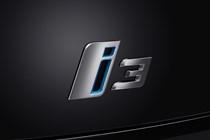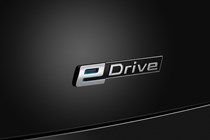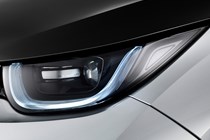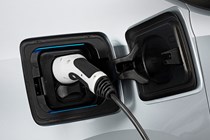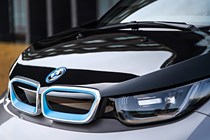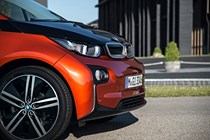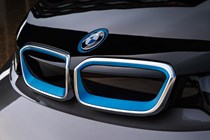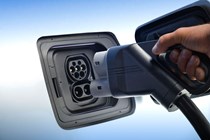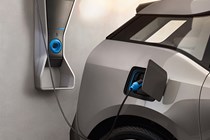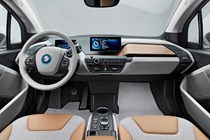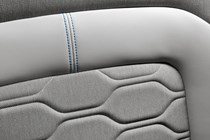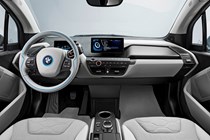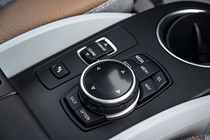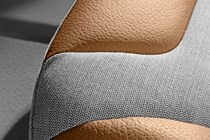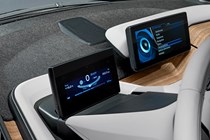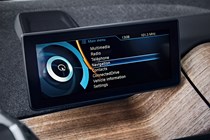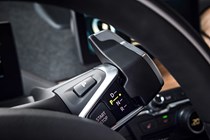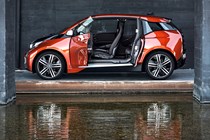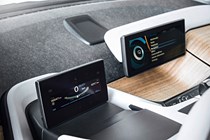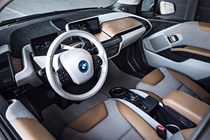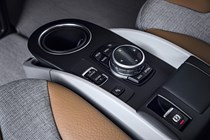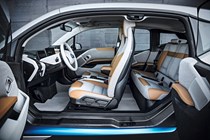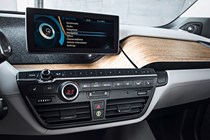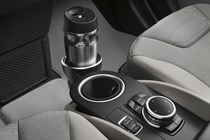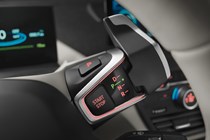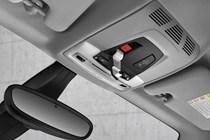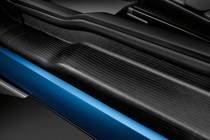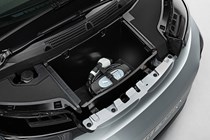
BMW i3 Hatchback (2013-2022) interior, tech and comfort
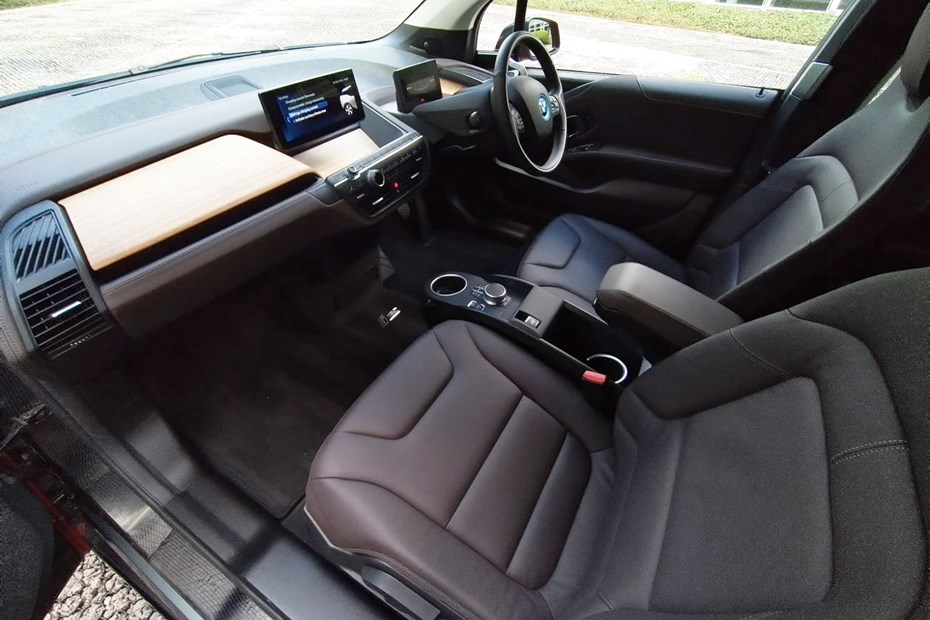
- A minimalist delight
- Cabin still feels modern
- Light, airy, roomy… in the front
How is the quality and layout?
It might be getting on a bit, but overall the BMW i3 manages to feel modern and familiar at the same time. There’s plenty of carryover BMW switchgear and instrumentation and the pedals and switches all feel just like those in a 3 Series, but some of the features are presented and arranged in an unusual way.
A column-mounted rotary gearlever for the automatic transmission should be intuitive, rolling it forwards engaging drive and twisting it back selecting reverse, but anyone used to a conventional auto ’box will find themselves selecting the wrong mode on occasion.
Thanks to the large amount of glazing, and predominantly light natural materials used throughout, the i3 feels spacious up front. There’s a natural and honest feel to the cabin that sits well with this car’s eco credentials – many of the materials used look intentionally recycled.
The dashboard, with its layered elements, stretches out far in front of you, the windscreen base far ahead, and the lack of transmission tunnel and lower centre console only adds to the feeling. Opt for the Lodge interior trim and the natural eucalyptus wood running across the dashboard makes it feel even brighter.
Quality is right up there with larger or more expensive models in the BMW range. The i3 has an excellent range of adjustment for the seat and steering column – so the perfect driving position is easily achieved.
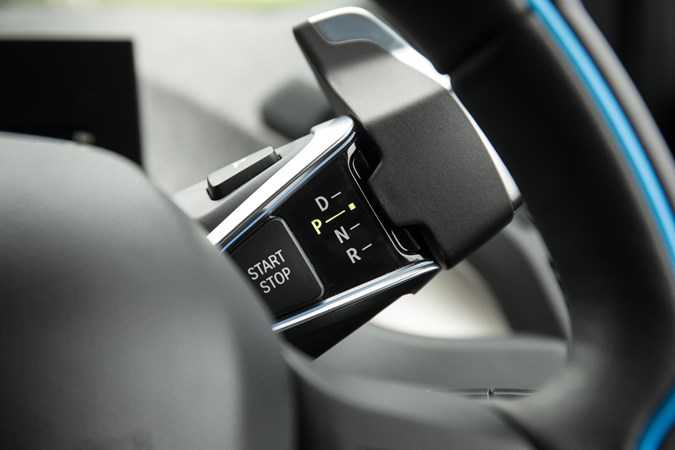
Infotainment and tech
The familiar iDrive controller is present and correct, and its functions are displayed on a centrally-mounted 10.25-inch infotainment screen – the only differences between the one here and a 1 Series being the specific i3 information offered. It’s an easy system to navigate, even if it may take new users a few extra hours of familiarisation.
All models get sat-nav, Bluetooth and USB-C sockets. There’s no touchscreen here – it’s all controlled by the rotary dial between the front seats and the screen display is pleasingly sharp. This might go against current convention, as do the dashboard-mounted shortcut buttons, but we really like this set-up. It’s a shame this generation of iDrive is on its way out.
We like how the sat-nav takes into account the needs of an electric car driver – it will directly guide you to public charging points when needed, and warns you if you can’t make your chosen destination without the need for recharging.
Comfort
- i3 largely a comfortable car
- Seats adjust and support well
- Ride can be quite bumpy in town
Being an electric car, there’s no engine noise to contend with. But what means is occupants are much more aware of wind and road noise that inevitably filters through to the cabin. It may not be any worse than in a conventional car, but you’ll hear it a lot more clearly in this car.
Those 19-inch (or optional 20-inch) alloy wheels don’t help soak up the lumps and bumps on the road, and sharper imperfections show the i3 to be slightly more rigid and firmly sprung than necessary for a small car. Considering most examples will spend their lives trampling along broken city streets that’s a disappointment and improved high-speed handling is scant consolation.
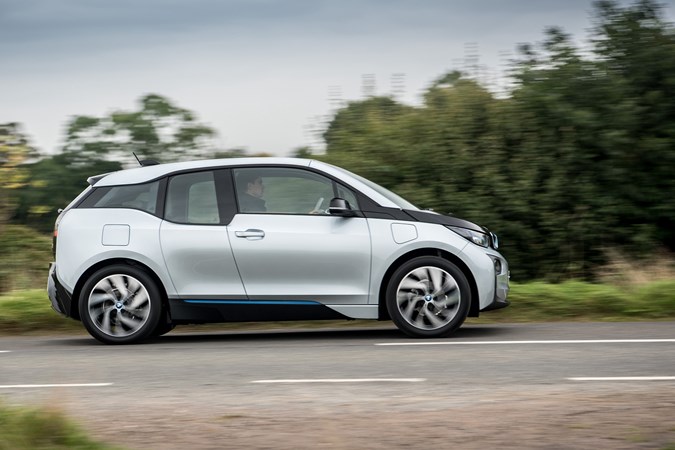
The interior is a bright space though, with plenty of room on offer up front. The rear seats prove comfortable for children and anyone under about 5ft 6in, with adequate headroom, but not much in the way of kneeroom. Just remember there are only two rear seats though, with no seatbelt provision for a fifth passenger.
Comfort is guaranteed in the front seats too, but while the flat bases won’t prove problematic around town the lack of side support can be an issue as cornering speeds increase.
